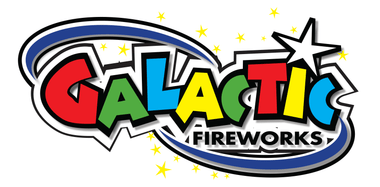
Understanding the Differences Between 1.3G and 1.4G Fireworks
Fireworks are a beloved tradition in many countries around the world, and it's important to understand the different types and classifications of fireworks, as well as their safety regulations. One of the most common questions people ask is, "What's the difference between 1.3 and 1.4 fireworks?" In this article, we will explain the key differences between these two types of fireworks.
First, it's important to understand that both 1.3G and 1.4G fireworks are consumer fireworks, meaning they are available to the general public. However, in the UK, you can usually only purchase 1.3G fireworks from specialist fireworks stores, while 1.4G fireworks are more widely available.
The main difference between 1.3G and 1.4G fireworks is their classification. This refers to the hazard level for storage and shipping rather than the category of the firework itself. In the UK, fireworks are classified according to the UN classification system, which is based on the amount of flash powder contained in the firework. Flash powder is a highly explosive mixture that is used to produce bright colours and loud effects in fireworks.
1.3G fireworks contain a greater percentage of flash powder than 1.4G fireworks, which makes them louder and more powerful. As a result, 1.3G fireworks are classified as a higher hazard level than 1.4G fireworks. Specifically, 1.3G fireworks are typically always classified as Category F3, while 1.4G fireworks are normally classified as Category F2 or F3.
Category F2 fireworks are the most common type of consumer fireworks in the UK, and they are often used at small events and private parties. These fireworks require a minimum safety distance of 8 meters (26 feet) and are suitable for outdoor use in gardens and small open spaces.
Category F3 fireworks, on the other hand, are larger and more powerful than F2 fireworks. They require a minimum safety distance of 25 meters (82 feet) and are used at both private events and larger public displays. These fireworks may also produce some debris, so it's important to ensure that the safety distance is appropriate for the type of fireworks being used.
It's important to note that the classification of a firework does not necessarily indicate its quality or effectiveness. A high-quality 1.4G firework can still provide an impressive display, equivalent to or surpassing 1.3G fireworks. It’s not a clear-cut rule that 1.3G is always better than 1.4G. There are many different types of fireworks available in both classifications, ranging from cakes and barrages to roman candles and selection boxes.
In the UK, the fireworks regulations and guidelines are set out in the Pyrotechnic Articles (Safety) Regulations 2015. The regulations define the hazard classification for fireworks and the rules for selling, transporting, storing and using fireworks. It is important to adhere to these regulations to ensure the safe use of fireworks.
In conclusion, 1.3G and 1.4G fireworks are both consumer fireworks that are available to the general public. The main difference between these two types of fireworks is their hazard classification, which is based on the amount of flash powder they contain. While 1.3G fireworks are more powerful than 1.4G fireworks, both types of fireworks can provide an impressive display.

